Are your pepper plants producing smaller-than-expected peppers? You’re not alone. There are many reasons peppers can grow to be small.
In this article, I’ll share the most likely reasons why your peppers are so small and how to grow bigger ones. Most of the causes for smaller peppers stems from environmental conditions that can easily be modified and improved.
1. Plants Too Small For Fruiting
By far the most common reason for small peppers is that the plant itself is too small for fruiting. We always recommend picking early flowers off of young plants to keep them focused on growing larger, first.
Removing early flower buds allows the plant to grow more leaves and nodes where more fruits can form. If your plants try to produce fruit while they are too small, you may end up with small peppers.
Tips to avoid this problem:
- Transplant at the right time. Don’t let your plants sit in a small container for weeks on end! Once a plant’s roots have evenly filled out a small container, it should be transplanted into a larger one with more soil. This allows the root system to continue to develop, uninterrupted.
- Pluck early flower buds. If your plants flower while they are young, it is a sign that the plant ‘thinks’ it can’t grow anymore. Carefully remove the early flower buds and encourage more foliage growth by increasing pot size or applying a nitrogen-focused fertilizer.
- Reduce overnight temperature. If you happen to be growing indoors, you can encourage your plants to be more vegetative by reducing the overnight temperature by 3-4°F.
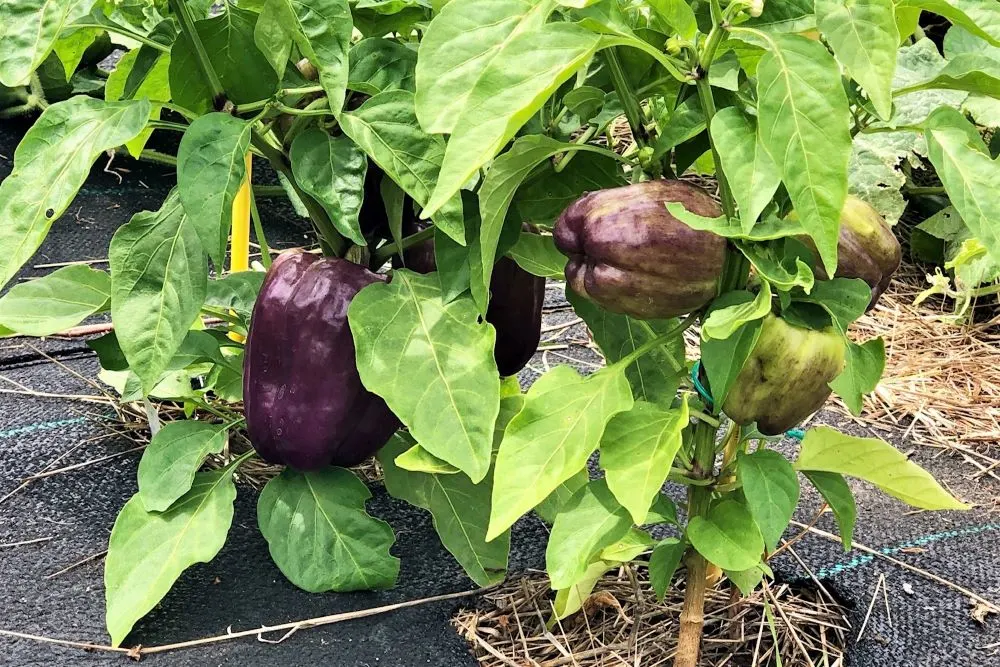
Another similar issue is having too many peppers growing on the plant at one time. Even if your plant is large, it can only support so many full-sized fruits at any given time.
Try to keep between 6-10 bell peppers growing on each plant at all times and remove extra fruits. This will maximize the plant’s energy and help ensure your peppers are all as big as possible.
2. Poor Nutrient Content (Plant Needs Fertilizer)
Large fruiting plants require rich soil. In a well-maintained garden bed, this is usually not an issue. However, if you are growing in containers, or have neglected your garden, you may need to enrich the soil.
Once a pepper plant has reached a mature size (~3-4′ tall), it begins to shift which nutrients are used. Namely, less nitrogen is required, and more potassium and phosphorus are used in fruit production.
Tip: Many tomato fertilizers will have higher phosphorus and potassium numbers to encourage higher yields of healthy fruits. See our favorite fertilizers here.
So, if you are growing in large pots and fertilizing, consider reducing the amount nitrogen (but not stopping completely). This helps signal to the plant that it is time to stop growing more leaves and focus instead on fruiting.
Tips for poor soil nutrition:
- Amend garden beds with compost annually
- Fertilize potted plants on a schedule
- Avoid over-feeding nitrogen
3. Lateral Stem vs. Main Stem Fruits
Large pepper varieties, such as bells, will produce larger fruits from their main stem flowers. These are the flowers that form directly off of the central, main stem of the plant.
Lateral stems are the branches that travel outwards from the main stem, giving plants a bushy structure. Lateral stems also produce flowers, but the fruits are often smaller.
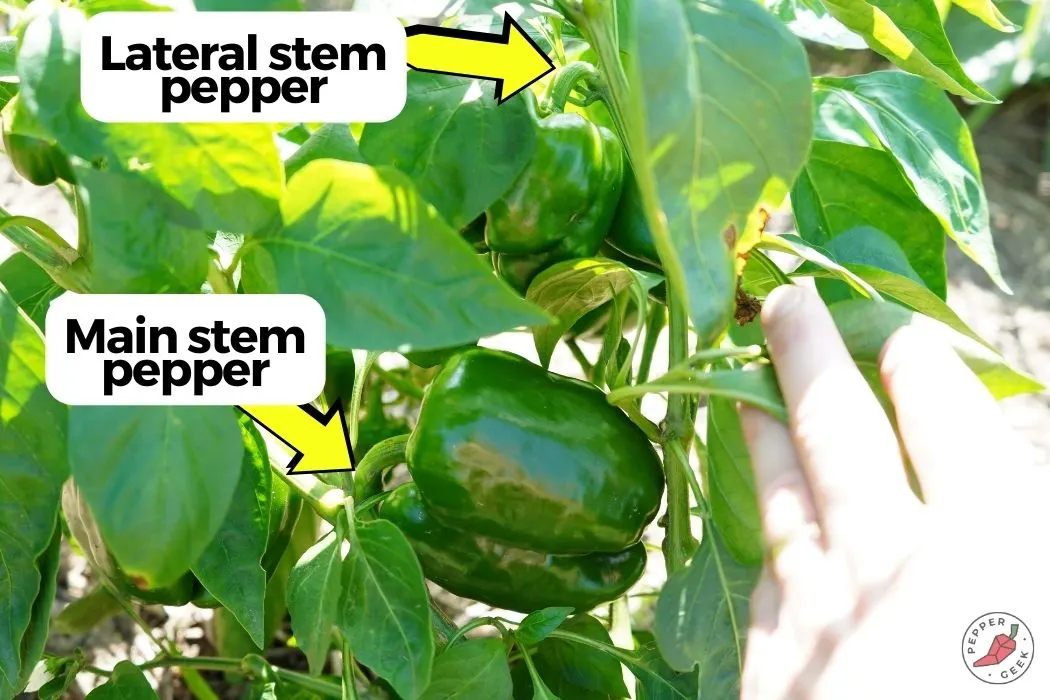
This is normal, as the nutrient flow is more generous to fruits closer to the main stem. Thus, the main stem fruits are often bulkier than those growing further from the main stem.
Selective pruning of your plants can encourage more main stem fruits. In some commercial growing setups, bell peppers are grown as a tall plant (up to 13′ tall!) to grow more consistently sized fruits.
4. Disease or Pest Issues
No plant is immune to disease and pest pressure, and peppers are no different. Many diseases can devastate a pepper crop, causing issues from curled leaves to small fruits, and more.
Most diseases will have other troubling symptoms which often affect the leaves, stems, growth rate, and more. If you suspect disease, look into what may be infecting your plant.
Consider growing one of the many disease resistant cultivars available. Try to track down which diseases are most notable in your region, and pick a variety that has the ideal resistance package.
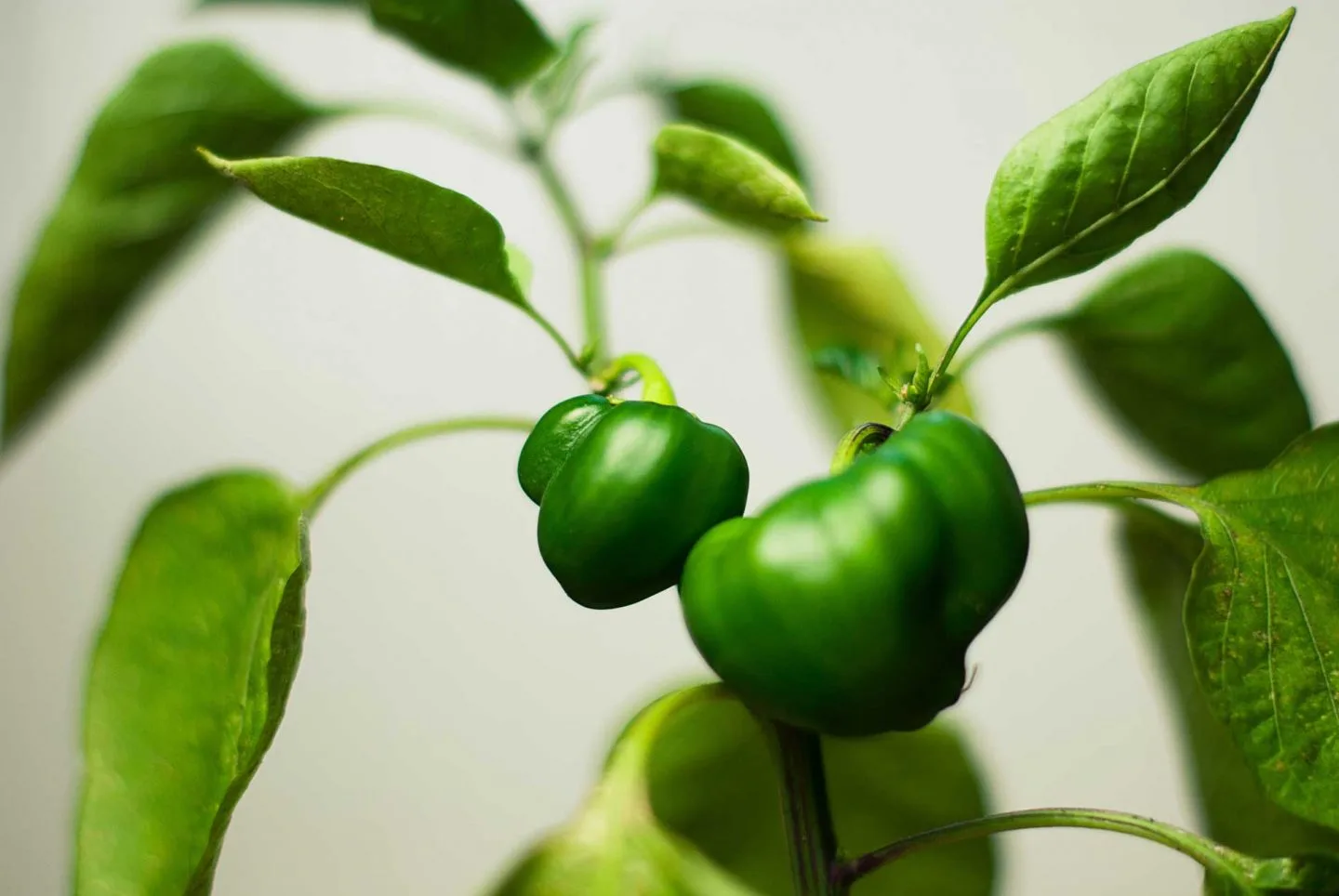
5. Inconsistent Watering
Proper watering is essential for growing healthy pepper plants. Poor drainage or clay-rich soil can lead to root rot, causing poor plant growth and even plant death.
Besides watering too much or too little, you can also water inconsistently. Despite popular belief, this is the primary cause of blossom end rot on peppers and tomatoes.
Poor watering technique:
- Water quickly and heavily
- Wait for the plant to completely dry out (droopy leaves)
- Water quickly and heavily
- Repeat
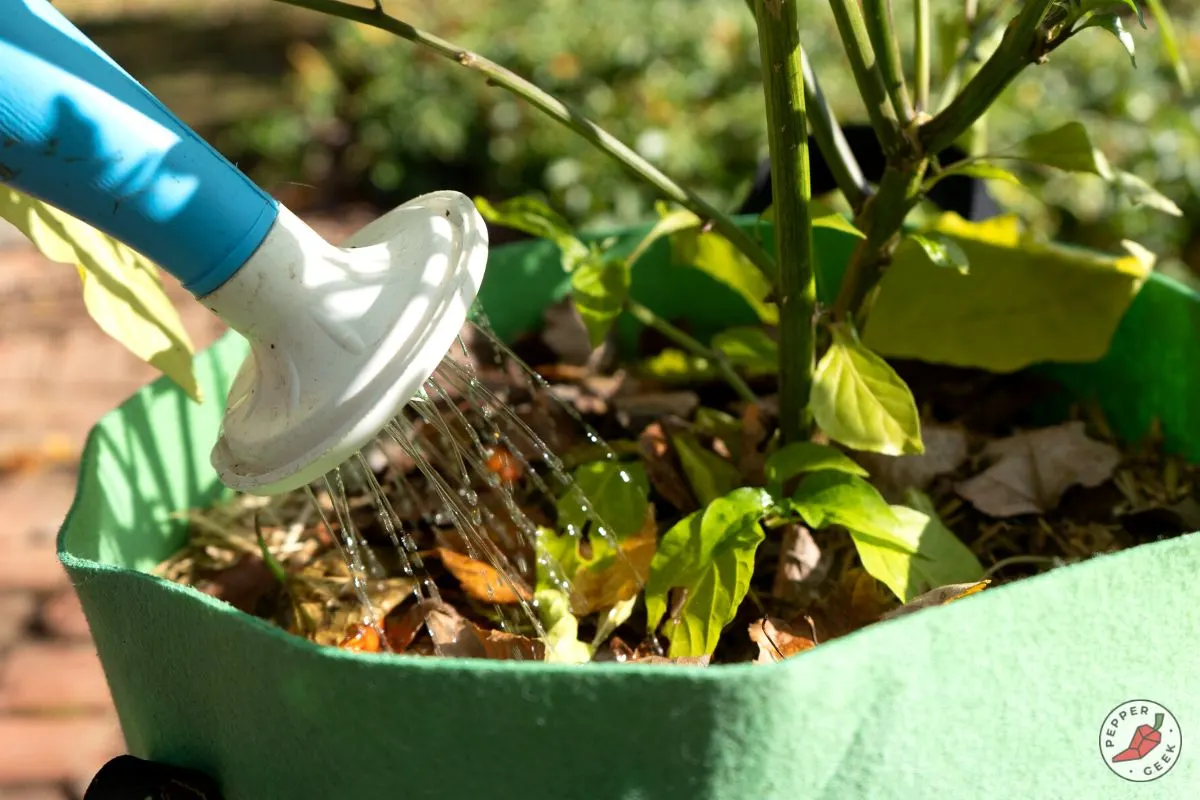
Instead of allowing your plants to dry out completely, try to keep your watering even. In other words, the soil should be moist at all times, but never sopping wet. Also, avoid allowing plants to dry out completely, as some potting soils can become hydrophobic over time!
Watering peppers properly can be complicated, as a plant’s needs changes with the weather and environmental conditions. Cooler temperatures means less watering, while windy, hot weather will cause plants to drink more. So pay attention to when you last watered and keep your soil evenly moist.
6. Temperature Fluctuations
The last possible cause for why your peppers are small is swings in temperature. As the summer season comes to an end, the nights can quickly turn cold. It is easy to miss the overnight forecast, especially when daytime temps are still warm.
If your pepper plants experience very cold weather, even for a night or two, they may begin to prioritize seed production. This means that regardless of the fruit size, they may stop growing and start forming viable seed.
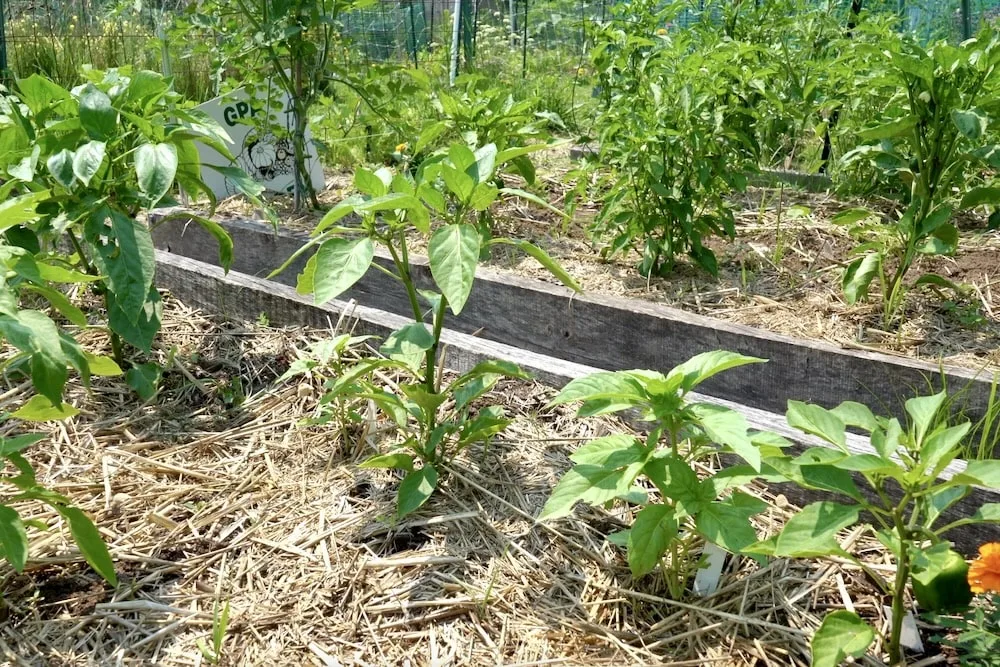
To help extend the growing season, we recommend using floating row cover to protect your peppers from the cold. This helps insulate the plants on cold overnights, extending productivity.
I hope this article helps you figure out why your peppers are so small, and helps you grow big ones instead! If you want to learn our full pepper growing technique, check out our post on how to grow peppers from seed here.

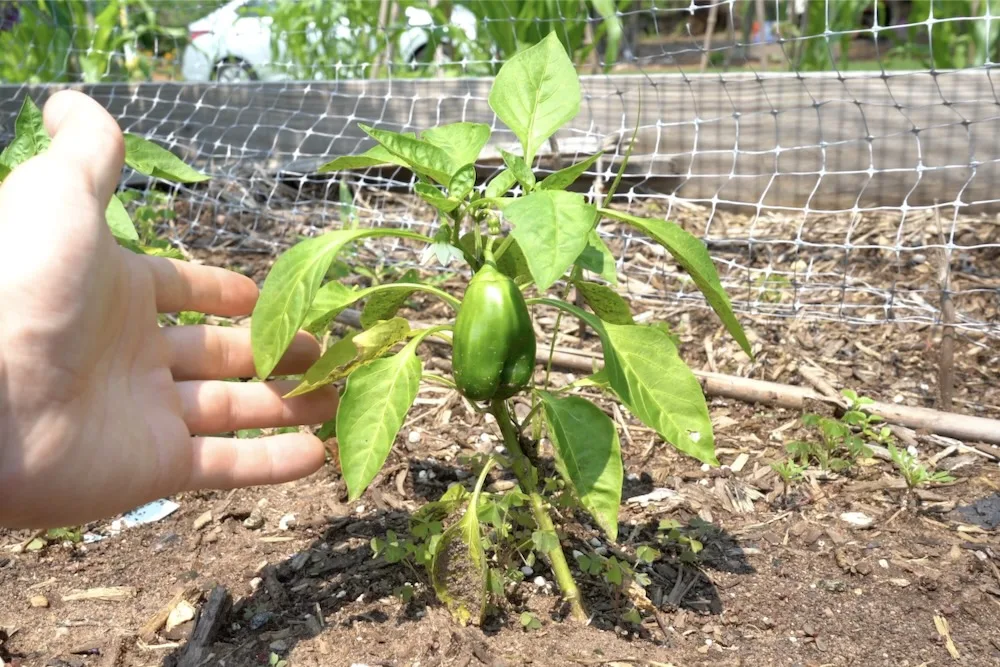

Joyce
Wednesday 10th of April 2024
Hi there, So I have another question. My pepper plants are now about 14 inches high and seem to have plenty of foliage….I put 2 in one pot. But there are probably 20 buds on the 2 plants and I’m wondering if I should trim them off. I just transplanted into a larger pot that I was hoping would be the size that would work for my indoor plants but I just don’t know. Thanks for your help. I refer to this site often.
peppergeek
Friday 19th of April 2024
14" tall is fairly large, but it depends what type of pepper. If they are smaller types (habanero, cayennes, etc.), they I might just leave the flowers to grow into peppers now and continue to provide plenty of light. Also, if they're in a smaller container together, this will limit the overall size the plants can reach, further reason to allow the flowers to form
Joyce
Friday 16th of February 2024
Hi, Off subject but I have just began to grow bell peppers from seed. So I’m curious if my plants will actually produce peppers. I ask this because I grew the plants from organic seeds taken from a bell pepper we ate in our salad. Every seed sprouted but I’m afraid I may be spending a lot of time that ends in no product.
peppergeek
Wednesday 21st of February 2024
If they sprouted, you can most likely grow a productive plant. However, keep in mind that it may have been a hybrid pepper that was in your salad, meaning the seeds may not produce the exact same pepper that the seeds came from. If you're open to some variability in the peppers, I say go for it
Andy
Saturday 22nd of July 2023
Hi Calvin , love your youtube channel. I like your tip about removing early flowers - forgot to do it this year. I'm wondering what would be the minimum container size for a bell pepper plant. My bell pepper fruits never seem to get bigger than 3" long. Bell pepper plants don't seem to be growing anywhere near 3'-4' in height - they seem to max out at 18"-20". My chilli peppers don't seem to have much problem in same size container. Any suggestions ?
peppergeek
Sunday 23rd of July 2023
I would suggest trying a couple of different varieties of bell pepper. Some of them have a more vigorous growth pattern. Another great way to increase size is by pruning off some of the branches, so basically removing one of the branches at each fork until the plant has 3-4 main stems/leaders. This encourages more upward growth. For bigger peppers, you'll want to pull some of the fruits off so the plant can focus on growing an appropriate number of fruits at a time (usually between 6-8)
John
Sunday 16th of April 2023
This is off topic Calvin - sorry. But would you know why are my PP leaves are turning a mottled purple?
Julie
Sunday 8th of January 2023
Awesome article and perfectly timed as I'm making list of What I Need to Do Differently This Season! I assumed my small pepper plants/fruits were due to my neighbor's large tree branch hanging over the bed and causing too much shade (cutting that baby down in March) but I'm guilty of leaving my seedlings in small pots for too long and not providing extra water on those super hot weeks. Thank you and I'm looking forward to a more plentiful pepper season because of your tips!
peppergeek
Monday 9th of January 2023
I'm glad you found it helpful! The branch could definitely have played a part - if it hangs over your yard, it's yours to cut down!